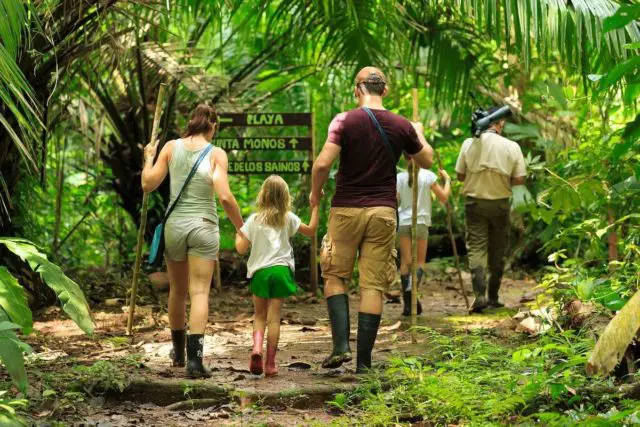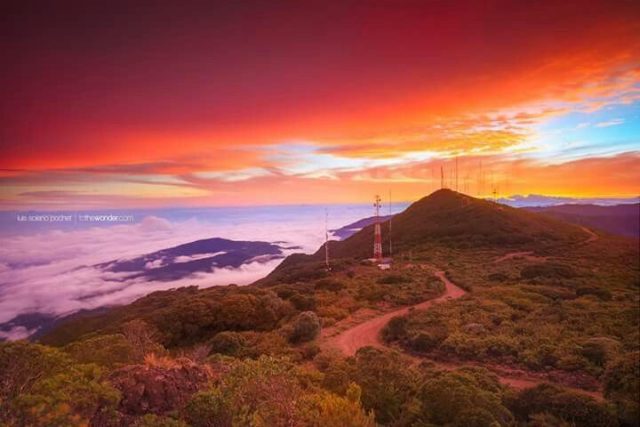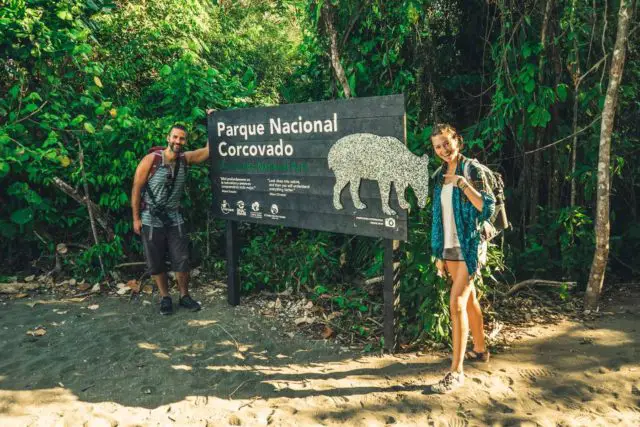
With 30% of its territory protected by National Parks and Natural Reserves, Costa Rica is a country that offers multiple natural landscapes where exploring them is best lived on foot. Its trails in tropical forests, cloud forests, mangroves, beaches, mountains, stand out. Hiking is one of the most popular recreational sports practices for both domestic and foreign tourists. The country is poised to attract tourists from all over the world, in part thanks to tourism agencies offering affordable and accessible travel packages.
Are you passionate about hiking?
If you want to know what are the best places to go hiking, what time to do it and all the necessary details, here we present you a complete guide:
Cerro de la Muerte

Summer is the best time to visit the Iyok Ami agrotourism farm, located on Cerro Buenavista or commonly known as Cerro de la Muerte for hiking and observing the mystical quetzal. Located at kilometer 71 of the Interamericana Sur, this reserve in the paramo cloud forest has the ideal qualities that the mystical quetzal bird requires for its courtship, mating, and nesting.
Cerro de la Muerte also has a significant number of native avocado trees, whose fruit is the main source of food for the birds and attracts them to the area. In addition to the walks, Iyok Ami has accommodations, also a dining room and a reading area.
Cerro Chirripó
Located along with the heart of the Cordillera de Talamanca in the south-central part of Costa Rica, is the Cerro Chirripó National Park that consists of more than 50 thousand hectares. The hiking trails will allow you to reach the highest point in the country and the second-highest in Central America. The top of Cerro Chirripó is 3820 meters.
On a clear day, you can see both the Pacific Ocean and the Caribbean Sea at the same time. Typically, the entire trip takes adventurers two or three days to complete To get to the park from the capital city, head east through Cartago on the Pan American Highway. Eventually, the main road goes up to Cerro de la Muerte, and then it will be arriving at San Isidro de El General. Then continue to San Gerardo de Rivas.
Corcovado National Park

The Corcovado National Park in Costa Rica is located in the southwest of the country, with access to the Pacific Ocean. 2.5% of the world’s biodiversity is found in this area, according to the National System of Conservation Areas. Also, there are 140 species of mammals, which represents 10% of the American continent.
Tourists no longer require guides for excursions or hiking to some of the trails in Corcovado National Park. The National Geographic magazine, Discovery Channel, and the Spanish newspaper, El País, ranked Corcovado among the best destinations in the world for its remote location, intense biodiversity, and extraordinary adventure.
Alajuelita Cross and Cerro Cedral
To enjoy a good hiking practice, you do not have to leave the Greater Metropolitan Area and that is what you can get by doing the “chestbreaker”, a hiking route in Alajuelita on Cerro San Miguel.
You are going to walk along the Agres river and then a climb of almost a kilometer and a half at a 45-degree angle on Cerro San Miguel, so the chest is almost hitting the hill and requires a lot of effort, that until you get to the Cruz de Alajuelita and then pause and begin the descent through another sector.
The San Miguel hill is the fourth among the highest in Escazú and reaches an altitude of 2,035 meters above sea level. If the weather conditions allow it, you will be able to observe beautiful views of the Central Valley and the Rabo de Mico, Cedral, Pico Blanco, and Pico Alto hills.
Miravalles National Park
It is located in the province of Guanacaste and was declared a National Park in 2019, becoming number 29 in Costa Rica. It has an area of 4,300 hectares. To get there, you must first head towards Bagaces, which is located 194 kilometers northwest of San José, on the Inter-American highway. Then, continue towards Guayabo, 30 kilometers north of Bagaces.
At the Guayabo-La Fortuna junction, the Miravalles Volcano looks impressive. The very humid forest covers its skirts. It is the refuge of some felines, deer, coyotes, tepezcuintles, saínos, and monkeys, among many others.
Monteverde Cloud Forest
The Monteverde Cloud Forest Biological Reserve covers around 5,000 hectares and is world-famous for its cloud forest. More than 2,500 plant species, 100 types of mammals, 400 different birds, and 120 reptiles and amphibians provide extremely high biodiversity. Monteverde was included in the world ranking of the most notable forests in the world, so it is undoubtedly a spectacular place for hiking.
To get to the Reserve, follow the Interamerican Highway north from San José to the cairn km 149. Just before crossing the bridge over the Lagarto river, turn right and continue 40 km on the paved road. Also, there are direct bus services from San José to Monteverde and taxi service between Santa Elena and the Reserve.
Curú National Wildlife Refuge Park
The 17 paths that cross the Curú National Wildlife Refuge, in the Gulf of Nicoya, have a special ingredient that will attract hikers; This is Playa Quesera, one of the most spectacular beaches in the country. To get to Playa Quesera, you must walk around 6 kilometers until you find this sandy beach. White, perfect for snorkeling.
The area has a great variety of flora and fauna, where specialists have identified 78 species of mammals, 87 species of reptiles, 232 different types of birds, and more than 500 species of plants. In this natural sanctuary you will find 3,705 hectares of tropical forests, mangroves, and green fields along the coast.
Drive to Puntarenas (2 to 3 hours depending on traffic), take the ferry to Paquera (1 to 1 1/2 hours), and drive to the Curú entrance (30 minutes). The entrance will be on the left side.
Sarchí, Alajuela
The Jardin Else Keintzler is located in Sarchi, the cradle of national artisan crafts and the place where the typical picturesque carts are made. They have seven hectares of lush tropical gardens that are attractively designed for the visitor, featuring a garden of hibiscus, heliconia, succulents, bromeliads, palms, orchids, fruit trees, copse, among others. A tour of the trails and gardens takes around an hour and a half and can be entered with pets.
Carara National Park

Located between Cerros de Turrubares and Cantón de Garabito. The main entrance is 2 kilometers south of the Río Grande de Tárcoles Bridge. The Carara National Park, which in the indigenous language Huetar means “River of lizards”, has the only transitional forest in the Central Pacific, which translates into a diversity of flora and fauna, where species of dry and humid forests converge.
This National Park is a world-famous ornithological destination because it has a very diverse birdlife, where the Red Macaw (Aramacao) stands out, as an endangered species. It is the first national park that has a universal access road, where the visitor can enjoy the experience of hiking in the forest, meeting endemic species and large trees.
Turrialba Volcano
This protected area is located in the Turrialba canton of the Cartago province, in the easternmost part of the Central Volcanic Cordillera, 24 kilometers northwest of the city of Turrialba. It forms a single system in conjunction with the Irazú Volcano. It is an oval-shaped stratovolcano and its formation is due to explosive and effusive events of lava, it presents three craters with the presence of castings on its flanks. With a maximum elevation of 3,340 meters above sea level, being the second-highest volcano in the country.

